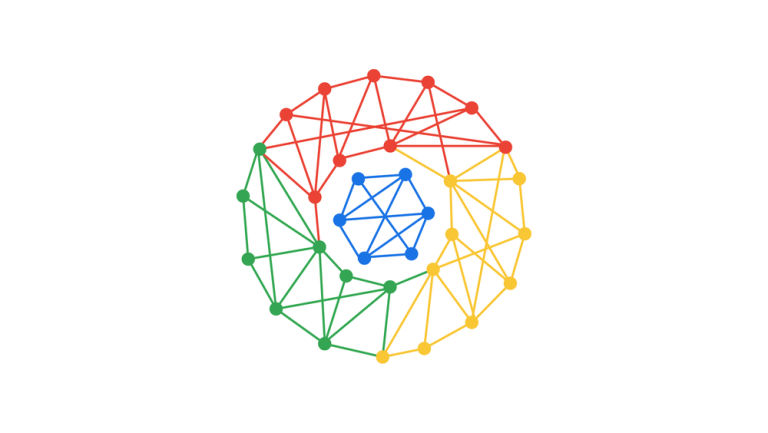Unlocking the Power of Analytics: Essential Insights for Savvy Investors
Investing in Analytics: Key Considerations
The lasting impacts of the pandemic, combined with economic uncertainties and hybrid work models, have intensified the need for organizations to be more agile, transformative, and adaptable. This article explores why investing in business intelligence (BI) and data analytics is essential for establishing resilience in today’s fluctuating landscape.
The pandemic has expedited digital transformation and emphasized the necessity of data-driven decision-making and business intelligence tools across various sectors, including healthcare, logistics, finance, and retail. Recent reports indicate that the business intelligence market in the United Kingdom is on track to achieve a compound annual growth rate (CAGR) of 9.2% during the 2021-2026 forecast period.
However, according to data from the OECD’s skills database, the UK is grappling with significant deficits in advanced analytics and technology skills. In response, the government has introduced a £1 billion support package aimed at enhancing analytics development within businesses, which is expected to stimulate market growth.
Bridging the Data Skills Gap
For years, business leaders have presumed that upskilling employees through data training and offering self-service tools would create a data-centric organization. Yet, self-service BI alone does not effectively bridge the skills gap. Not everyone possesses the time or inclination to become proficient in data analysis, particularly in today’s post-pandemic environment, where teams are often understaffed and individuals prioritize their time differently.
In 2022, organizations are anticipated to redefine their approach to building a “culture of analytics.” This shift will involve delivering insights to employees in more accessible formats, utilizing solutions like embedded analytics that do not necessitate additional skill acquisition or time investment. This adaptation is vital in the current hybrid work environment, ensuring staff have seamless access to real-time data, enhancing their ability to operate in a “data-smart” manner.
Tackling Tool Fatigue
The pandemic’s push for remote work has led to an increase in collaborative digital tools such as Zoom, Slack, and Teams. However, these applications can be distracting and inefficient as employees juggle multiple platforms, leading to a phenomenon known as “tool fatigue.”
Investing in data and analytics solutions that add more applications is no longer seen as best practice. Encouraging users to adopt yet another app can lead to disengagement. Instead, organizations should focus on integrating analytics within existing workflows, providing employees with direct access to insights through familiar applications like Slack and Teams. This seamless integration enables employees to make informed decisions without unnecessary disruptions.
Avoiding Common Mistakes in BI/Data Analytics Investments
Data analytics has been instrumental in how we have navigated the challenges posed by COVID-19. In the UK, the government opened certain datasets to the private sector for the first time, facilitating collaborative data analysis among public services.
As corporations leverage data analytics, technology, business intelligence, and AI, we are entering a new era of decision-making and value generation. However, the potential of data analytics may remain unrealized if common pitfalls in data utilization are not addressed. One crucial mistake is the tendency to seek data only after formulating ideas and then following the data without critical assessment. Instead, analytics should inform and shape decision-making processes from the outset, allowing organizations to harness their full potential.
To truly harness the power of data, it is essential to integrate analytics seamlessly with our creative workflows. Traditional, isolated dashboards can disrupt existing processes, leading us to inefficient decisions. By embedding analytics directly into the applications we frequently use, we can access valuable insights swiftly, improving accuracy at crucial business decision points.
Moreover, relying solely on spreadsheets and unclear visualizations hampers our ability to derive meaningful insights. The rise of self-service business intelligence (BI) has propelled data visualization, enabling us to create insights that are actionable and easily digestible, rather than spending excessive time on tedious spreadsheets. It’s crucial to resist the temptation of flashy visualizations just for the sake of novelty; often, straightforward bar and time-series charts are the most effective. Collaborating with in-house experts can ensure the development of suitable visualizations that integrate into our workflows, thus fostering data-driven decision-making.
Success Story: Huws Gray
Huws Gray serves as a prime example of a company effectively utilizing data analytics to drive digital transformation and growth. As an independent builder merchant with over 100 locations across the UK, they recently adopted Sisense, an AI-powered analytics cloud platform. This strategic move was aimed at supporting their growth initiatives for 2022.
Prior to the implementation of Sisense, Huws Gray relied heavily on manual data analysis via spreadsheets, which was both time-consuming and unscalable. This approach led to inconsistencies in reporting, with varying results from point-of-sale systems.
In 2020, the decision to move to Sisense transformed their operations. The platform provided clear, comprehensible dashboards that visualized their data effectively. This transition facilitated deeper financial insights, allowing the company to monitor inflation and product costs accurately.
Since adopting Sisense, Huws Gray has experienced:
- A reduction in time spent analyzing data by up to 90%
- An increase of approximately 75% in data accuracy confidence
- A 100% improvement in reporting consistency
- A reduction of over 75% in risks associated with data leakage and security
- A 50% faster identification of trends
Mike Owen Jnr, IT Director at Huws Gray, remarked, “The Sisense dashboards provide employees with a quick visual overview, expediting access to crucial information. As we continue our expansion strategy in 2022, we are confident that Sisense’s robust and scalable platform will support our growth.”
Building Resilience with Decision Intelligence
As highlighted by Gartner’s Top Strategic Technology Trends for 2022, a new era of ‘decision intelligence’ is emerging in the UK, focusing on enhancing organizational decision-making through proactive and practical means. Effective decision intelligence involves modeling each decision as a series of processes that utilize analytics and intelligence to inform, learn from, and refine choices.
This evolution of analytics extends beyond merely describing past events (descriptive analytics) and predicting future outcomes (predictive analytics) to providing prescriptive guidance on what actions to take. By investing in advanced data analytics tools that offer prescriptive insights, organizations can preemptively address potential issues, such as alerting customer service representatives to reach out to dissatisfied customers before they escalate their concerns. Sales leaders can respond promptly to revenue drops without waiting for quarterly reports, and retail managers can optimize inventory levels proactively using comprehensive data.
The shift towards prescriptive analytics will enable businesses to transition from merely tracking data trends to making informed, proactive decisions, ushering in a new era of decision intelligence.
NVIDIA is propelling Germany to the forefront of Europe’s AI manufacturing landscape. The company is establishing strategic partnerships and leveraging innovative technologies to enhance Germany’s capabilities in this domain.
MedTech initiatives are also gaining momentum, with AI playing a pivotal role in advancing hardware solutions and clinical applications. This integration is expected to revolutionize healthcare delivery through improved diagnostic and treatment processes.
However, despite the push for AI technologies, a substantial gap exists in the execution of AI projects; reports indicate that approximately 80% of these projects fail to transition into operational phases. This highlights the need for effective strategies to bridge the gap between conception and execution.
In education, teachers in England have received the go-ahead to incorporate AI tools into their classrooms. This move aims to enhance learning experiences and empower educators to utilize technological advancements to foster better student engagement and outcomes.
For more in-depth insights and technological updates, consider subscribing to our community to receive premium content and the latest news directly to your inbox.
Artificial Intelligence and Machine Learning Insights
Machine Learning in Cloud-Native Container Security – Machine learning plays a critical role in improving the security of cloud-native containers, ensuring robust protection against threats. 41848 view(s)
Innovative Applications of Machine Learning – Discover how machine learning is revolutionizing business processes across various sectors, leading to enhanced efficiency and innovation. 14351 view(s)
AI in Music Streaming – Recent reports suggest that AI and bots may have been exploited to artificially inflate music streaming numbers, raising concerns in the industry. 12183 view(s)
Outsourced Development Partnerships – Explore the advantages of collaborating with outsourced developers, particularly in leveraging AI capabilities. 10401 view(s)
Latest Developments
AI Utilization in Education – Teachers in England have received approval to incorporate AI into their teaching methods, marking a significant step forward. June 11, 2025
Influence of AI on Cryptocurrency – The impact of AI technology on the cryptocurrency sector is becoming increasingly evident, with advanced algorithms shaping market dynamics. June 11, 2025
Views from Sam Altman of OpenAI – Sam Altman discusses the onset of an era defined by superintelligence, highlighting ethical considerations and future developments in AI. June 11, 2025
Stay Updated
Subscribe to receive our premium content and the latest updates in technology delivered directly to your inbox.
Explore Our Categories
- Applications
- Companies
- Deep & Reinforcement Learning
- Enterprise
- Ethics & Society
- Industries
- Legislation & Government
- Machine Learning
- Privacy
- Research
- Robotics
- Security
- Surveillance
- Sponsored Content
Other Publications
- Developer
- IoT News
- Edge Computing News
- MarketingTech
- CloudTech
- The Block
- Telecoms
- Sustainability News
- TechHQ
- TechWire Asia
AI News is part of TechForge, delivering the latest insights and developments in AI and technology.
The function gform.initializeOnLoaded() is deprecated in the context of the form editor and will be removed in Gravity Forms 3.1. The script is designed to handle various events related to Gravity Forms initialization and AJAX postbacks.
Within the script, several event listeners are set up to manage actions when the main scripts are loaded, theme scripts are loaded, and when the document’s DOM content is ready. This structure ensures that specific functions are only called when the necessary components are fully loaded, enhancing performance and reliability.
Form Fields
The form includes several fields labeled as required:
- First Name
- Last Name
- Job Title
- Company Name
- Company Size
- Company Sector
- Country
Different options are presented for Company Size and Company Sector, as well as a comprehensive dropdown for Country that includes a wide array of nations from around the world.
Permissions
The form also includes a permission checkbox, requiring users to submit their email, agreeing to the site’s Terms and Privacy Notice.
JavaScript Functions
The script encompasses various functions for initialization and event handling. It manages visibility checks, debounces events to optimize performance, and ensures that content is appropriately rendered based on user interactions. Key elements include:
triggerPostRender()to handle rendering events after form submissions.debounce()for optimizing event triggers.- Mutation observers that monitor changes to DOM elements for visibility adjustments.
Overall, the structure promotes efficient form handling, ensuring that users receive timely feedback and interactions as they engage with the Gravity Forms interface.







